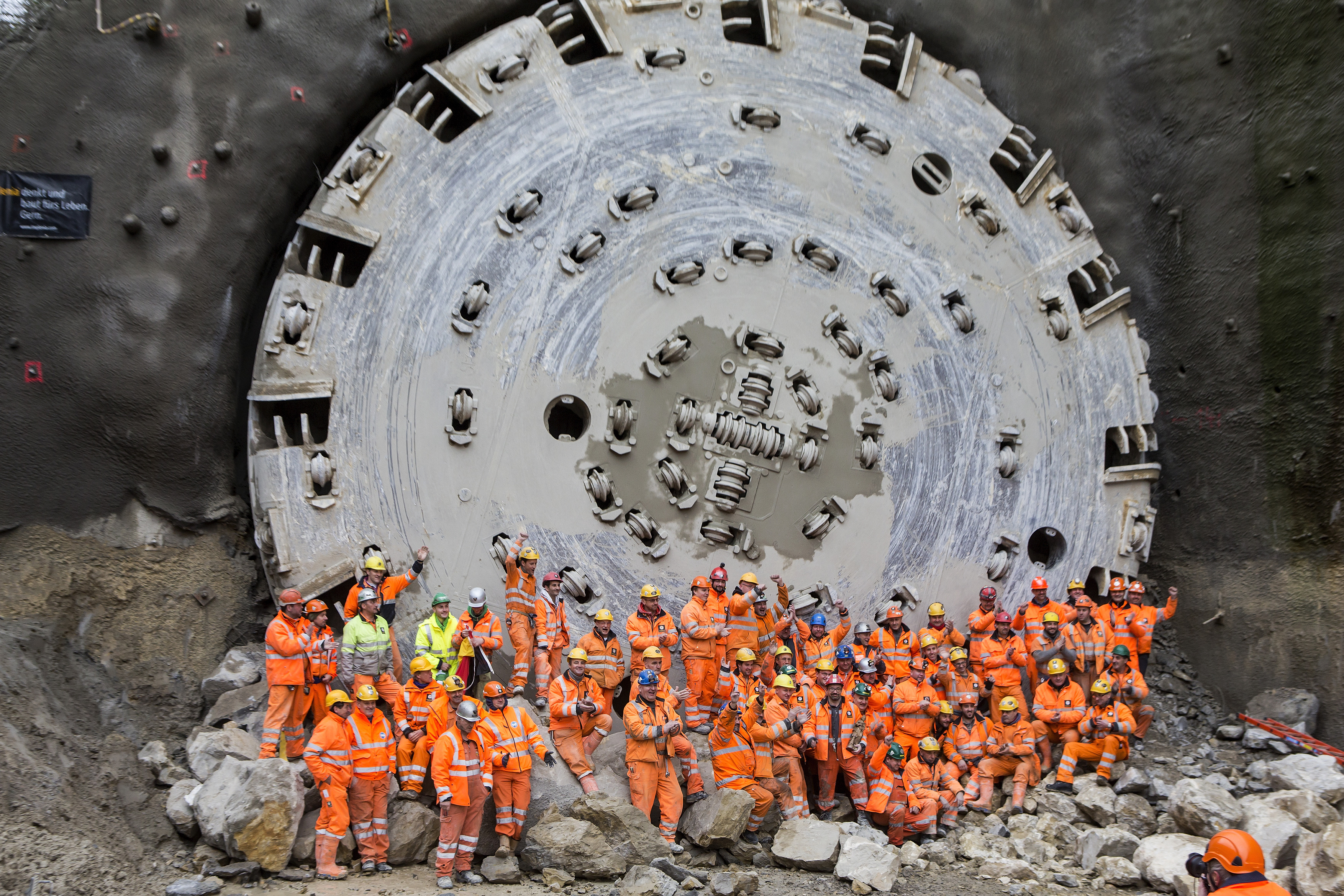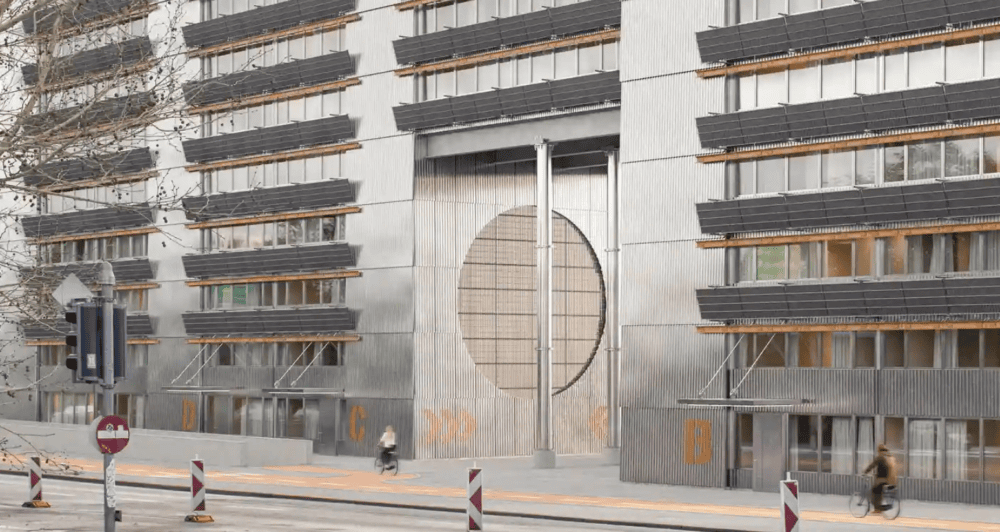Breakthrough at the Bözberg tunnel
Two weeks after the actual breakthrough at the Bözberg Tunnel, the event was also officially celebrated on December 13.

The tunnel boring machine had already reached Effingen on November 29, 2017 and bored through the tunnel. For safety reasons, however, this event had to take place in camera, according to SBB, which is expanding the line on behalf of the federal government. After the construction site in front of the Effingen portal had been secured, the client SBB, cantonal and government representatives, and Implenia, which was commissioned with the work, celebrated the completion of the main drive at the Bözberg Tunnel.
The new 2.7-kilometer-long double-track tunnel, which runs parallel to the existing tunnel, will in future be able to transport all the transhipment containers commonly used throughout Europe. In the coming year, Implenia will construct the five cross-connections, the entire interior work and the two tunnel portals. After that, the shell will be completed and the rail technology with overhead conductor rail and a fixed guideway will be installed. The first trains will run through the new Bözberg Tunnel from the end of 2020. By 2022, the old tunnel will be converted into a service and rescue tunnel.
The four-meter corridor with the new 2.7 km Bözberg Tunnel is the third most important project on the Gotthard axis alongside the Gotthard and Ceneri Base Tunnels. In order to increase the shift of transalpine freight transports from road to rail, the route from Basel to Ticino will be extended by 2020. Around 20 tunnels will be upgraded and 80 adaptations made to platforms, contact current and signaling systems, and overpasses. This will enable semitrailers with a corner height of four meters to be transported in the future. According to forecasts, the corridor will enable up to 160,000 additional shipments to cross the Alps by rail instead of road.









